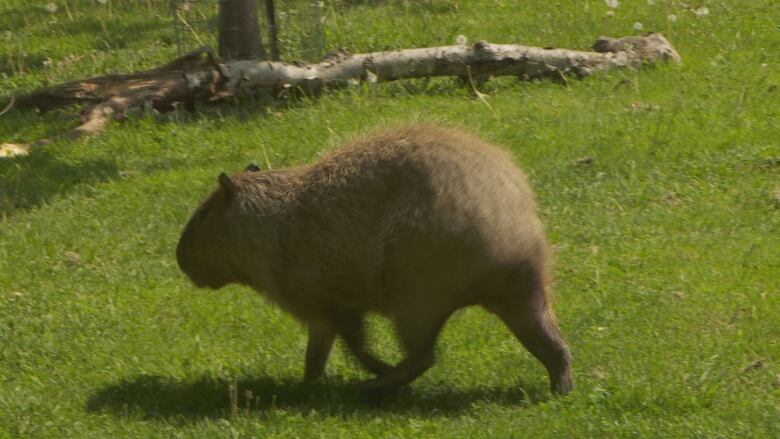Capturing High Park capybaras 'like running after a cheetah'
Diogo Beltran has plenty of experience wrangling the rodents that have overrun Sao Paulo
Catching thepair of capybaras currently on the lam in Toronto's High Park won't be an easy feat, according to an expert with experience wrangling the giant rodents in his native Brazil.
- Capybara watch Day 3: Furry fugitives 'aren't in a rush to come home'
- How a couple of capybaras escaped High Park Zoo, leaving a lone male behind
- Capybaras on the loose! The chase is on after dog-size rodents escape High Park zoo
"They have this survival instinct.It's like running after a cheetah," saidDiogoBeltran, who worked with theTropicalSustainability Institute in Brazil, a country where capybaras are a major nuisance, not unlike rats or raccoons.
"In Brazil it's a hobby. We don't go out hunting turkeyswe capture capybaras in our spare time," he said in an interview on CBC Radio'sMetro Morning.
Two capybarasa male and a female dubbed by social media as Bonnie andClydeescaped from the park's petting zoo on Tuesday. Since then, park staff have tried to lure the pair back into captivity. Meanwhile, the rodents, which can grow to the size of a mid-size dog, have become social media sensations.

One reason is that capybaras aresemi-acquatic. They can hide in water and remain below the surface for up to five minutes at a time. It's for this reason Beltran says they can't be captured using tranquillizer darts because they'll just run into the water and drown once the sedative takes effect.
Quick breeders
Another problem? They breed quickly.
Beltranwas once on a team taskedwith removing a group of 80 capybaras from a river. They only got 76 of them. The remaining four soon got friendly.
"Three years later, those four turned into 150 capybaras," he said.
He said capybaras aren't aggressive. They generally flee when people show up. But they do come equipped with large teethand have been known to bite people who try to capturethem.
Beltransaid capybaras are a nuisance in that they'lldestroy gardens, leave behind large "rabbit-like poo" and, sadly, get hit and killed by cars. Adults can grow to up to 200 pounds.
In Brazil they've also been linked to the spread of disease.
Great interview. We are looking for animal tracks and poo droppings and will continue to do so. @HighParkZoo https://t.co/AjDt5czxRD
—@DoucetteWard13"They will poo in your yard," saidBeltran. "They will eat your flowers and graze on your lawn."
The escaped capybaras are probably loving life right now. High Park is large, with plenty of forests and waterways for them to hide. Also, this week's warmerweather probably has them feeling right at home (capybaras are native to South America).
But assuming they remain alive and on the run months from now, winter will pose a big problem.
"They're not going to be able to forage," said Beltran. Also, it will be hard to hide when the leaves are off the trees andGrenadier Pond is frozen solid.
Meanwhile, anyone who does spot the capybaras is advised to call 311, the city's information line.
Please help us bring our #capybara homecontact @311Toronto if you see our furry friends in the park!
—@HighParkZooWith files from Errol Nazareth













_(720p).jpg)


 OFFICIAL HD MUSIC VIDEO.jpg)
.jpg)



























































































